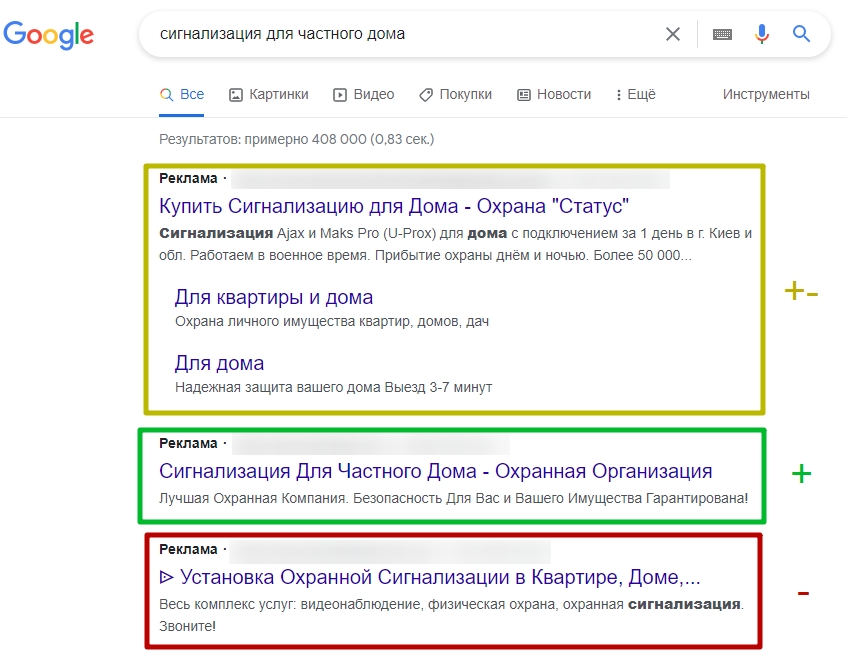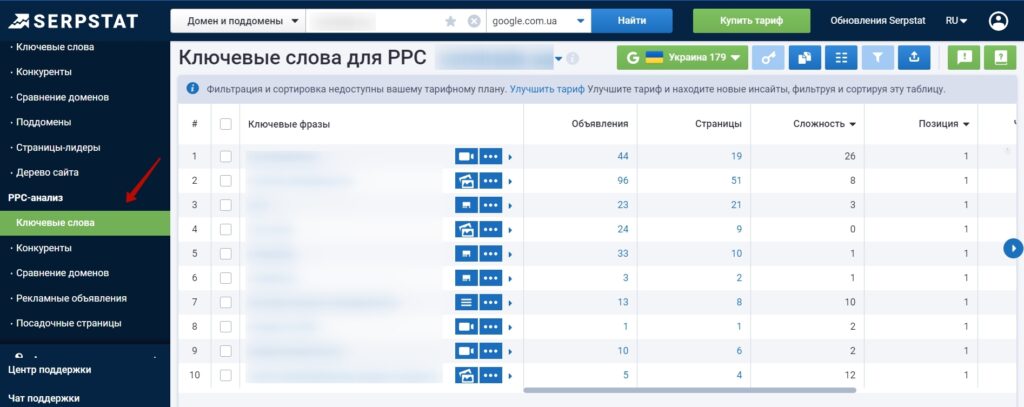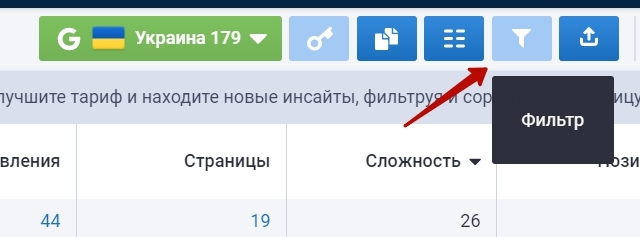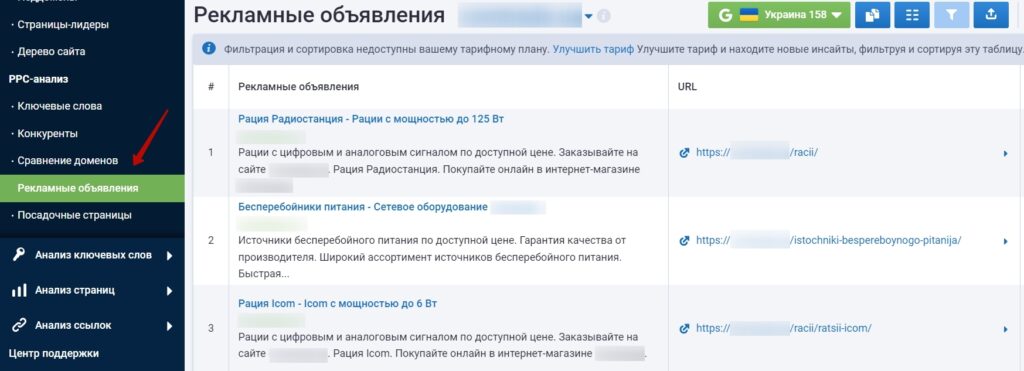The success of any project in online advertising is formed by several elements that form the so-called advertising bundles. If at least one of the elements in such a bundle works poorly, then the efficiency of the entire structure decreases.
The original term “bundles” appeared thanks to affiliates who used it to designate the combination “traffic source – offer”. Any promotion channel can act as a source: a blogger post, teaser or social networks, AdWords contextual advertising or banners on any other site.
In arbitration, this aspect is crucial, because even by simply copying a competitor’s link, you get the opportunity to earn hundreds, and sometimes even thousands of dollars the very next day.
How many calls and sales will I get by ordering contextual advertising from you?
I need to calculate the conversion of my website Describe
the task
in the application
Calculate potential ad revenue Google
contextual advertising calculator
What are links in contextual advertising?
For most business areas, contextual advertising invariably forms the bulk of traffic. It has long been the main source of customers for many companies.
Links in contextual advertising is a combination of a certain list of search queries, ads and landing pages, which together give the highest conversion of a visitor to an order. The principle of operation of the bundle is shown in the diagram:

How do links work in contextual advertising?
To understand how links work in contextual advertising, let’s analyze in detail all the links that they consist of.
Keywords
It depends on the selection of search phrases and the thoroughness of the study of the semantic core whether the attracted audience will be the target and whether it is interested in your offer. To perform this task correctly, you need to figure out what needs lie behind the phrases that users type into the search box.
In Display Networks, audience targeting can be used instead of keywords, but this does not change the general concept. Both keywords and targeting characterize the audience. They show which visitors you need and which ones you do not want to attract to your site. This set is usually divided into microsegments.
At the heart of a single microsegment is a single need. You are promoting one product, but buyers may have different reasons to buy it. The selection criteria will also be different.
For some, specific characteristics, model or brand will be decisive. Many choose a product for a given application. There are also those for whom the opportunity to get a loan or installment plan, get a discount or free shipping is important. Someone does not want to spend time visiting the store, others want to see and touch everything. Someone needs only one product, but there are those who prefer to buy it in bulk. You can continue for a long time.
There are dozens of meaningful selection options and, as a rule, users mention them in search phrases. This makes linking ads on Google search very easy.
The search query allows us to understand the need, so when launching an advertising campaign, key phrases are markers for us. The more detailed the user describes the need for his request, the more words he uses in the key phrase, the more likely it is that he has already decided and is ready to buy.
Ad text
Creating a high-quality semantic core is only half the battle. It is also important to attract the attention of users interested in the offer. It is necessary that they notice the ad among the ads of competitors and click on it to continue the interaction.
Important! Compiling an advertisement is one of the most important steps when launching a contextual campaign. This process must necessarily be preceded by an analysis of competitors and the formulation of their own advantages over them. Only after that should you write headlines and texts that show all your strengths.
When creating an ad, follow these guidelines:
- The promoted product must be mentioned in the first heading. It should clearly state what you are selling. If the entire search query is included in the title, great! Often the key takes up the entire volume of the title.
- In the second heading, insert an important benefit for the user. Do not write here what comes to mind first. Think and formulate the phrase in such a way as to interest a specific segment of the audience. It should contain benefits and value for a potential buyer.
Important! Contrary to popular belief, position and size of an ad play a secondary role. If the headline doesn’t match the user’s needs, they will prefer a competitor’s more precisely worded offer. In this case, neither a high position on the issue, nor an extended format will help.
Let’s look at an example:

The second result most closely matches the user’s expectations, and besides, this advertiser will pay less than its competitor, which is in the first place. The last of the three results in the headline of the ad focused on installing an alarm in the apartment and loses against the rest.
In search contextual advertising, it is important to follow the principle of relevance. The user is looking for a certain product under certain conditions, and you must use the title to convey to him the information that you meet these conditions. After all, it was not just that the person indicated in the request that he needed an alarm specifically for a private house.
Advice! In an ad, never focus on what you don’t have, such as missing a certain model in stock or not providing installment plans.
There are businessmen who like to play with “enticements” – super discounts or free additional services that are not provided to everyone, but the site owners report this in small print somewhere at the very bottom of the page.
If you’re taking an honest approach, don’t hide the promised benefits. After mentioning the promotion in the ad, tell us more about it on the first screen of the landing page.
How many calls and sales will I get by ordering contextual advertising from you?
I need to calculate the conversion of my website Describe
the task
in the application
Calculate potential ad revenue Google
contextual advertising calculator
Landing page on the site
To form a semantic core at a fairly decent level, many people do it, as well as write relevant texts and ad headings. Therefore, the landing page in contextual advertising more often than other elements acts as a link that pulls down the entire campaign.
It is advisable to apply the concept of personalization to the landing page, because it depends on it whether the visit to the site ends with a conversion action. Otherwise, the bundle will not work fully.
Attention! A potential buyer absolutely does not care how many people work in the company and what is your turnover. When making a decision on concluding a deal, the determining factor is how you solve its problem.
In many situations, simple changes lead to a significant increase in orders: new wording in the page title, placement of a button with a call to action, etc.
How can I find out the advertising bundles of competitors?
You can track the working connections of other market participants using services for analyzing competitors in contextual advertising.
There are quite a lot of similar services. All of them allow you to find out what keywords your competitors are advertising for, what texts they use in ads, and what landing pages drive traffic from PPC. Among such services are Serpstat, Ahrefs, Semrush, SEranking and many others.
It is effective to use this method of forming advertising bundles when there is a clear understanding that a certain site has been advertised for a long time and receives good traffic.
Competitor keywords
In the Serpstat search, we indicate a competing site, set the geographic location and go to the “Domain analysis – PPC analysis – Key phrases” module:

If there is a list of negative keywords, you should use it in the filter:

The service allows you to collect competitors’ search phrases based on the intersection of requests between three sites.
For example: in the “PPC analysis” section, we are looking for “Domain comparison”. We enter two competing sites and get the following data:

The area of intersection is the keys that match, the remaining space is the unique queries of the same site.
Using the required segment, you can get the phrases that were missed at the campaign planning stage and apply them to your bundles.
Ad title and text
To view the search results for a competitor’s offer of interest, enter a query in the Serpstat search and follow the chain “PPC analysis – Advertisements”:

If you want to download all the ads of a certain competitor, you should search not by the search phrase, but by the domain.
For the convenience of subsequent analysis, the data can be arranged in a table.
Landing pages
To get a list of a competitor’s landing pages, use the domain search and follow the chain “Domain analysis – PPC analysis – Landing pages”:

Landings where your competitor’s ads lead to will be displayed here.
There is also information about the total number of ads, in the settings of which a particular page is specified.


















